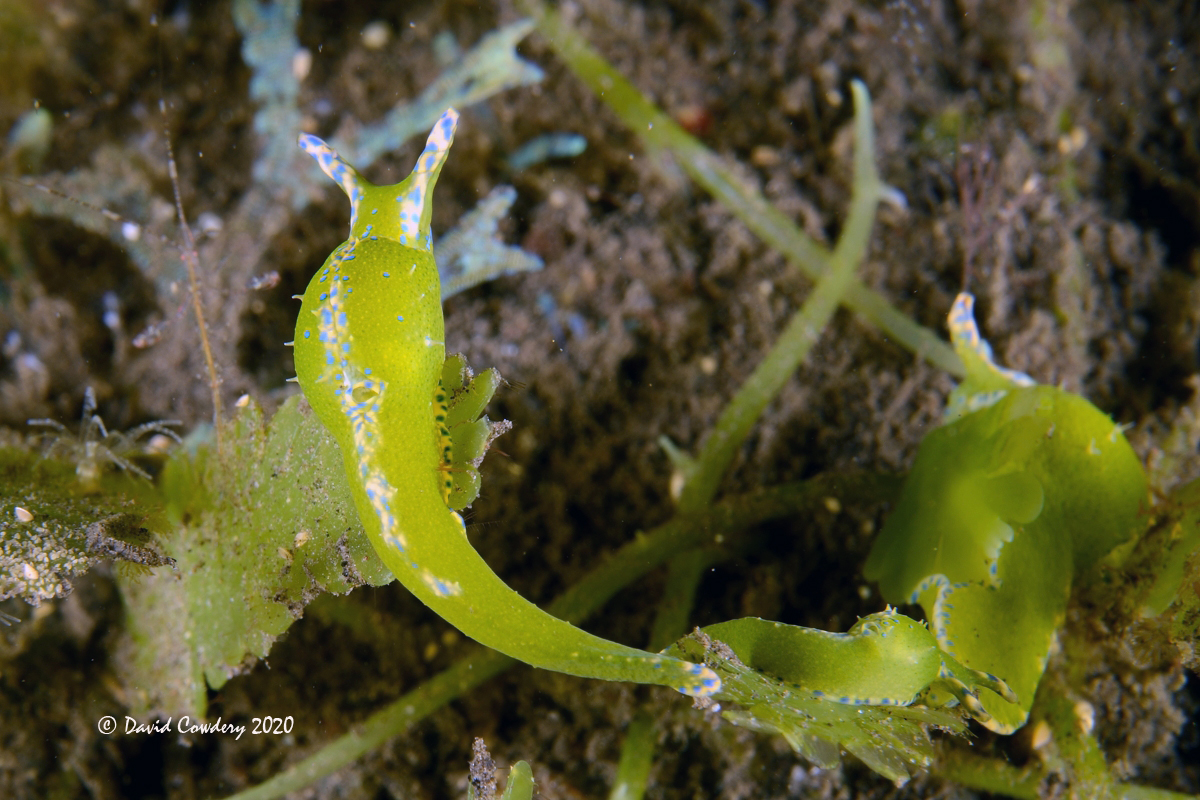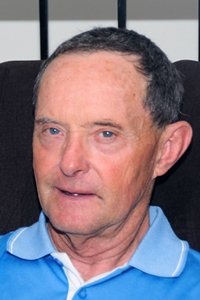 |
Image courtesy of David Cowdery
Bontoh Village, Sangeang, Komodos, Indonesia
I love this little family of amazing animals. Not only do they qualify as Solar Sea Slugs, housing chloroplasts in the tissue for the purpose of carrying out photosynthesis within there own tissue, but they have evolved the unique defense mechanism of autotomy, or the ability to discard pieces of their tail and lateral papillae, much like a lizard dropping its wiggling tail, distracting the potential predator while it sneaks away. These slugs do the same thing - the discarded tissue wiggling in the water, leaves the predator confused with what the heck is going on, while the slug crawls off.
NSSI 2nd Edition lists several undescribed species as "Oxynoe sp. #." A little heads up for those of you that want to update your copy of the book - following the sp# is a name in quotes, like Oxynoe sp. 1 "kylei." This species, along with three others in the book, has now been officially described and we can use these names as the official genus and species - i.e. Oxynoe kylei. Sweet, huh?
David's photo here is very similar to the critter we call Oxynoe cf. natalensis in NSSI 2nd Ed on page 400. Both match Smith's 1903 description, to a degree. The rhinophores and margins of the parapodia are yellow with blue spots. The parapodia appear to be scalloped, but that is where things end. For now, it's - c.f. (Latin meaning "compared with") natalensis, even though David's critter is from Indonesia, a long way from Natal, South Africa, its type locality.
Dave Behrens
Sammamish, WA 98074
Oct., 2020
Send Dave Behrens email at davidwbehrens@gmail.com

Dave Cowdery is a retired bio-medical Engineer and is the inventor of the Alumina/Titanium hermetic feedthrough (1970) for implantable bionics and the first to introduce a Titanium casing. This invention created the first bionic implant (pacemaker) with a service life that could be measured in years rather than months and is the basis for todays huge multi billion dollar bionic industry. David is a Divemaster with over 5,500 dives experience and is based near Byron Bay in Australia. David is also a keen competitive road bicycle rider covering over 400 km most weeks. Photographic equipment used Nikon D800 camera with DS160 substrobes.
Send Dave mail at divec@ozemail.com.au
|

Attention all you Sluggers, and you know who you are! The NSSI 2nd edition is now available in ebook PDF and book form . The hard back version will become available Nov. 1st. Both will cost $65 (individually). You will need to jump through a few hoops to get the electronic version as pdf distribution is protected by Adobe ID!! Please read the following to enable reading your electronic purchase! This new 2nd Edition is updated and reorganized, including 185 new species. Among other features, the new edition includes additional photographs of species, an identification key, and an up-to-date classification reflecting the latest evolutionary relationships. The Indo-Pacific represents the largest expanse of tropical ocean in the world, stretching from the Indian Ocean coast of southern Africa and the Red Sea to the central Pacific of the Hawaiian Islands, Easter Island and the Marquesas. This region supports the most diverse marine fauna of any place in the world for most groups of marine organisms. The nudibranchs and sea slugs are no exception to this rule; there are about 3,000 described species of these organisms in the world and at least 40% of these have been found exclusively in the Indo-Pacific tropics. This book illustrates 2,138 Indo-Pacific nudibranchs and sea slugs, including many undescribed species.
|

|
